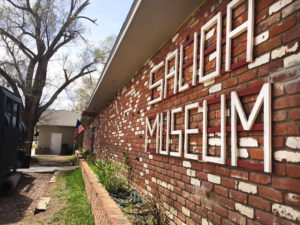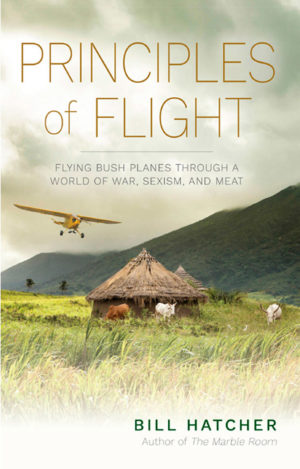By Martha Quillen
Mention America’s Great Divide today and most people will think of the partisan divisions growing between Trump supporters and critics, blacks and whites, men and women, and other political rivals. But when I first moved to Colorado the most talked-about Great Divide was the geographic barrier that divided rivers flowing east from rivers flowing west.
I moved to Denver from a suburb of Washington, D.C., in 1967, graduated from high school in 1968, and moved to Greeley that fall. In the beginning, I only met college students from elsewhere. But then I started dating a native and learned all about Nathan Meeker, the Union Colony and Colorado. Greeley wasn’t a small town, but it had a small town vibe, a little like Salida’s. Teenagers drove their cars around and around a downtown area known as dizzy block. And adults frequently discussed teachers and events from way back in grade school.
By the time I went to college, I barely remembered the junior high schools I’d attended. I went to three and don’t recall much about them, but new places were always enlightening.
In Denver, there were girls who regularly got into physical fights with one another. I’d learned how to fight off angry bullies in grade school in Michigan, but had never met girls who liked to brawl before. At Walter Johnson, an upper-middle-class school full of preppie types in Bethesda, Maryland, I sat near a student who openly prepared and shot up drugs during class. Before that, I’d never realized how obliging science classes were in supplying Bunsen burners and small torches that could serve for cooking heroin and hot dogs. I’d likewise never realized that defiant kids with enough attitude could openly commit crimes if administrators, teachers and students alike didn’t want trouble. It was a revelation so edifying, I didn’t mind when he snapped, “What the f%#* are you looking at bi@#*?”
In Greeley, fundamentalist students often argued with science teachers about creationism; whereas in Michigan arguing with an adult could be lethal.
And in the 1960s and ‘70s, Coloradans everywhere seemed obsessed with pioneer status and history – something I’d never encountered before. But during my first eight or ten years in Colorado, I doubt a single week went by in which I didn’t hear the phrase, “You Easterners always,” which was admittedly aggravating. But the thing I loved most about Colorado were its old-timers and their devotion to history and traditions.
And I still love that. I married Ed Quillen, who was so enamored with history and museums he taught Colorado history at a junior college when he was still in high school. And checking out historical attractions was what we did. We spent weekends in the mountains – on Boreas Pass, Rollins Pass, Cottonwood Pass, Tincup Pass, Engineer Mountain Pass – where big old boarding houses, cabins, mills, flumes, pioneer cemeteries and false-fronted buildings sagged but were nonetheless still standing.
What kind of state never tore anything down in order to build new? I didn’t care. It was glorious, and so were its natives. I remember talking to an old prospector in Silverton in the 1970s, who still wandered the mountains with his donkey panning for gold. I talked to old-timers about their train trips through the Alpine Tunnel, and over the Ophir Loop. I met a woman who had twins during a blizzard on Rabbit Ears Pass in the 1940s. When the twins finally got to Denver several days later, the hospital didn’t think they would make it, but I met those twins three decades later.
In Kremmling, I interviewed a trio of museum volunteers who told me about helping care for a neighbor’s triplets circa 1920. They kept them in the warming oven of the kitchen wood stove for months. According to the local assay office scales, those babies each weighed a little over two pounds, and all of them survived.
[InContentAdTwo] But now I live in a place where newcomers and old-timers regard each other with deep distrust and insist their nemeses are ruining everything – and this antagonism is clearly not just something the two sides fabricated. It reflects a growing sense of anger, injustice and insecurity that’s not influencing just Salida. It’s sweeping our nation and the world and feeding division, cruelty and crass disregard for others – everywhere and by everyone.
Factions in Salida seem a mite superfluous given our town’s comparative lack of ethnic or racial diversity. But in Political Tribes: Group Instinct and the Fate of Nations, Amy Chua, a Yale Law Professor and expert on ethnic conflict, says, “[W]hite Americans often hold their biggest disdain for other white Americans.” And Chua contends we’re experiencing “an unprecedented moment of pervasive tribal anxiety.”
Today everybody feels threatened. Blacks are horrified by mass incarceration and killings by police. Mexicans and Muslims worry about Trump’s intentions toward them. Women, gays and transgendered Americans fear a loss of hard-won protections. Trump supporters feel “under constant, vitriolic attack from liberal America.” And all Americans are vulnerable to street and school violence.
According to Chua, activism is moving away from the “group-transcending values” embraced by Martin Luther King Jr., Kennedy, Reagan and Obama. Current trends encourage group identity, exclusion and retaliation and retribution for past injustices. And that’s a whole new itinerary.
In summation, Chua encourages Americans to get to know one another better, as do several authors I’ve recently recommended, including Joan Williams (White Working Class), Arlie Hochschild (Strangers in Their Own Land), and Keith Payne (The Broken Ladder). In essence their message is to know your enemies – because if you do, you just may find out they’re not really enemies.
I agree, but I think we also need to know ourselves.
One of the things I love about Western stories is that they almost always end triumphantly. Surely twins and triplets were born in snowstorms and died, but that’s not the story Coloradans choose to tell.
My parents and grandparents, on the other hand, told a different sort of story. One of my grandmothers was the daughter of a widow who worked at a tuberculosis sanitarium in Ontario, and the other was the daughter of a sexton and gravedigger for a small mixed-blood (Native American, black and white) community in Michigan. And both told stories fraught with death. My grandmothers had both lost one parent early on, and then multiple siblings, and both recounted memories of corpses aplenty and were obsessed with tales about being buried alive.
You can talk about fake news, but narratives are never entirely true because there are countless ways to view events, and people settle on one for a reason. Pioneers told tales of vanquishing disaster, and my kin told stories of enduring it, and both narratives likely boosted survival rates.
And now, America’s most common narrative is that other people are threatening our future and treating us badly. This obviously isn’t an uncommon narrative. But where can it lead aside from violence or war?
We can swap it out. I like the old West “we can do it” narrative. But since some Westerners made it at the expense of Native Americans and laws, it’s not politically correct.
I am not overly fond of my family’s tales of being tough survivors, since it made my mom and grandmothers pitiless in the face of disaster. “Are you going to whine, or do something?” they’d ask, when the blood was pouring, or the sewer was backing up, or death was right there in front of you. But those stories got them through, and they were definitely the sort of people you called in an emergency.
Whatever narrative we choose, casting ourselves as victims is perhaps the least truthful and most unproductive role possible. So let’s formulate a new one. Chua and many other authors say we should know our adversaries better, and they’re surely right – because the only way we can construct a narrative in which both sides fare well is to include both sides. And that is surely our best course.
Martha Quillen has lived in Colorado for a half century.


